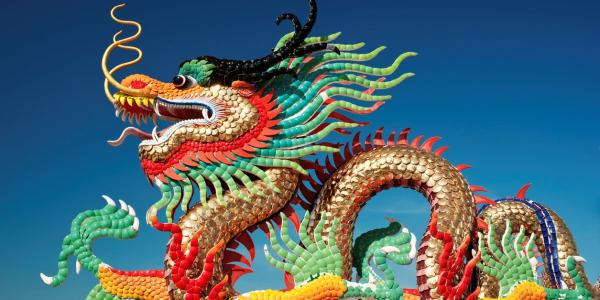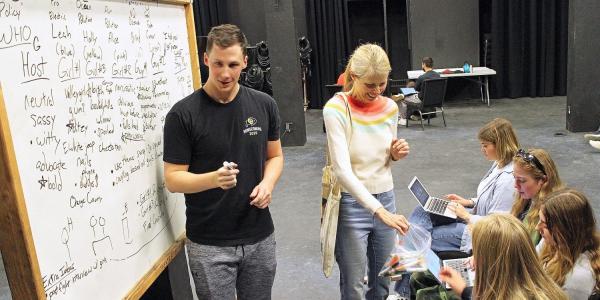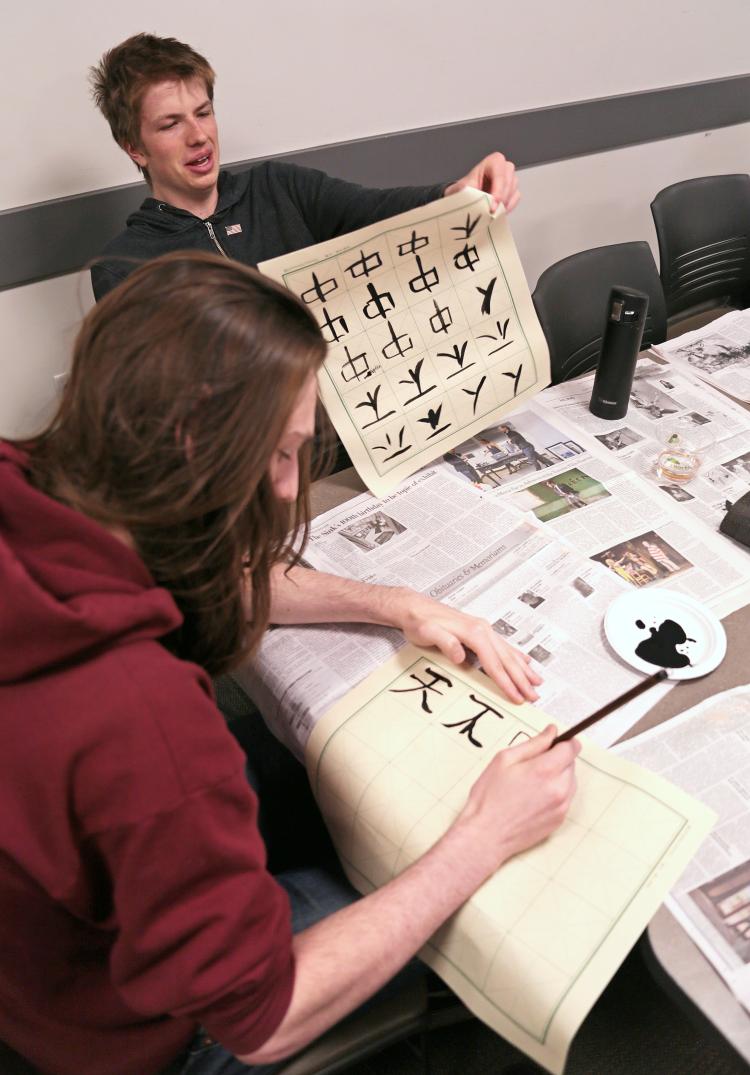At an evening of Chinese calligraphy, CU Boulder students studying Chinese practiced an art whose history dates back millennia
Learning a language is not just a matter of memorizing vocabulary and verb tenses or, in the case of Chinese, using the correct tone. It is not merely a matter of time spent in the classroom.
“Language is also a part of culture,” says Yingjie Li, a University of Colorado Boulder teaching associate professor of Chinese and Chinese language coordinator in the Department of Asian Languages and Civilizations. “It’s living tradition.”
For students of Chinese, this means learning to write a body of characters whose history dates back more than 3,000 years, to oracle bones from the Shang Dynasty. Rather than letters, many of the characters were visual representations of what they expressed. Echoes of those original characters can be found in the modern ones that evolved from them.
Thursday evening, almost two dozen first-, second- and third-year Chinese students gathered to practice Chinese calligraphy, which elevates Chinese writing to art.
“This is a way for students to get deep into the culture,” Li says. “What we’re doing in the workshop relates to what they’re learning in class, but it’s a more hands-on way to learn a really important part of Chinese culture.”
Led by Runqing Qi, a CU Boulder teaching assistant professor of Chinese who began the workshop with, “Let’s learn something interesting together,” students first practiced with water on special paper that allows each brush stroke to emerge in vivid black and then gradually disappear. Then they graduated to ink.
“It looks simple, but it’s actually not,” said Claire Kennedy, a third-year advanced Chinese student who is majoring in psychology and speech, language and hearing sciences.
In written Chinese, each stroke has a name and the strokes in each character are written in a specific order. And to do that beautifully?
“I think I’m going to need a lot more practice,” said Gregory Del Bene, a first-year Chinese student and math and computer science major.
“This is something fun for students that’s also a tangible connection to Chinese culture,” said Yu Zhang, a teaching assistant professor of Chinese, adding that faculty in the Chinese language program organize activities throughout the semester highlighting various aspects of the culture. The next will be a Chinese board game night, including mahjong and Chinese chess, at 5 p.m. Nov. 11.
Did you enjoy this article? Subcribe to our newsletter. Passionate about Asian languages and civilizations? Show your support.





